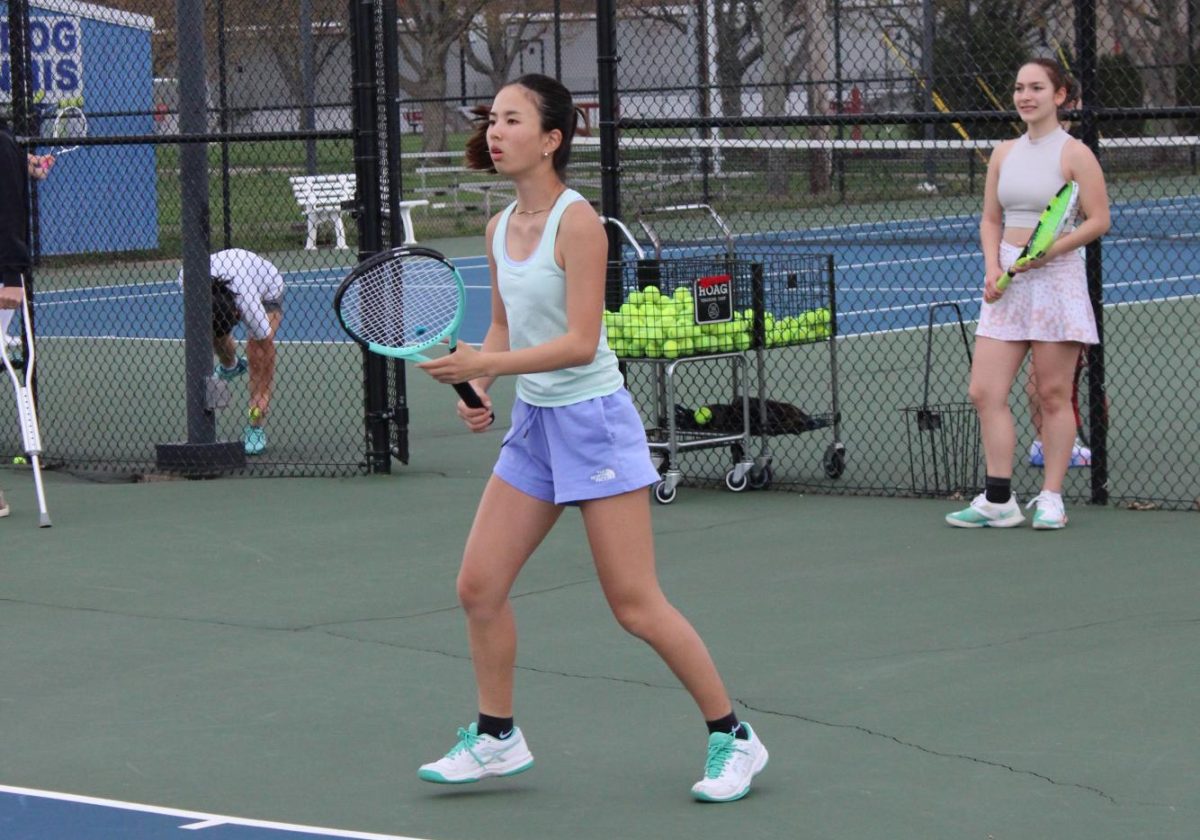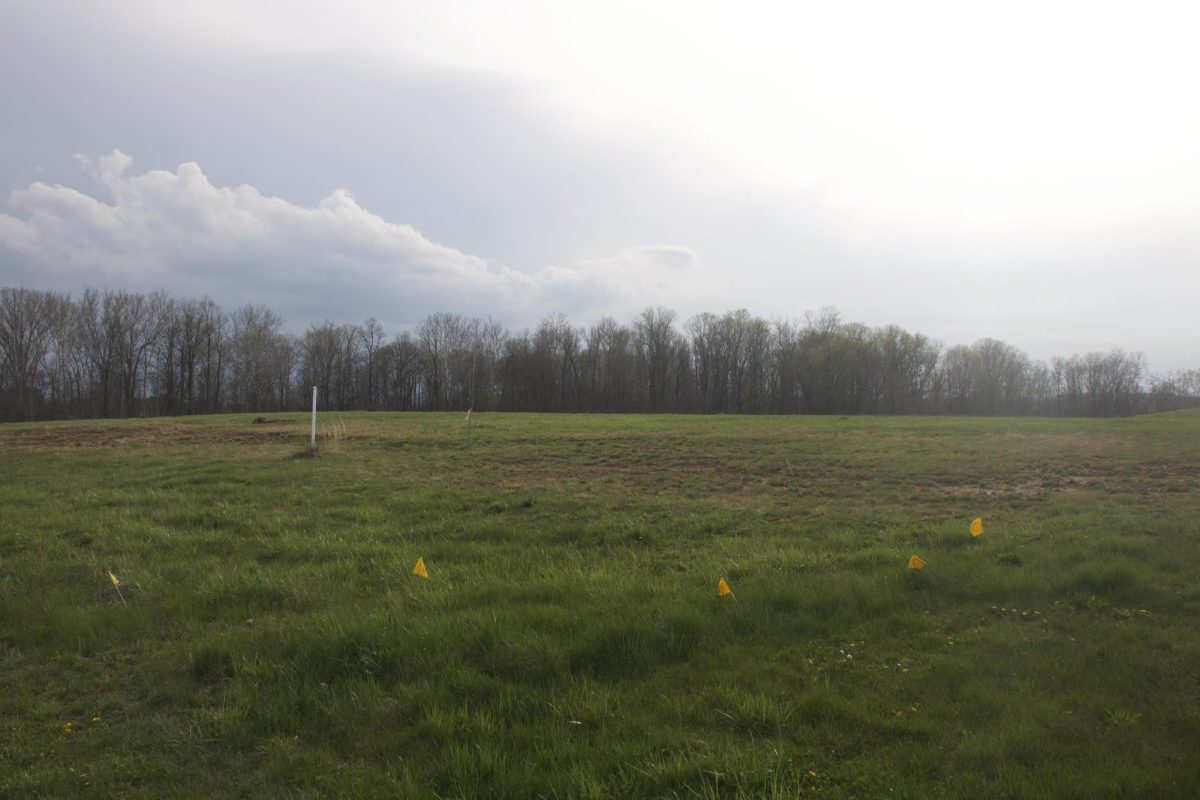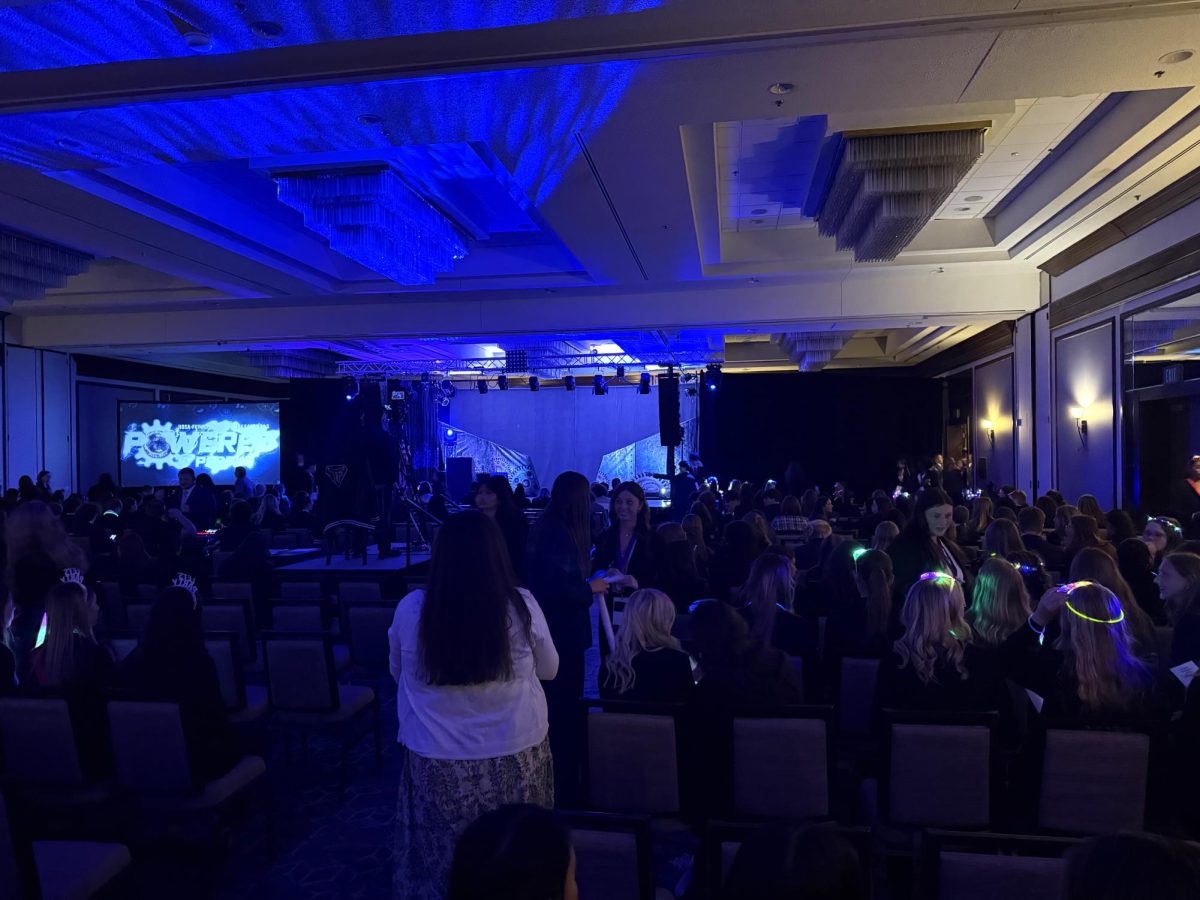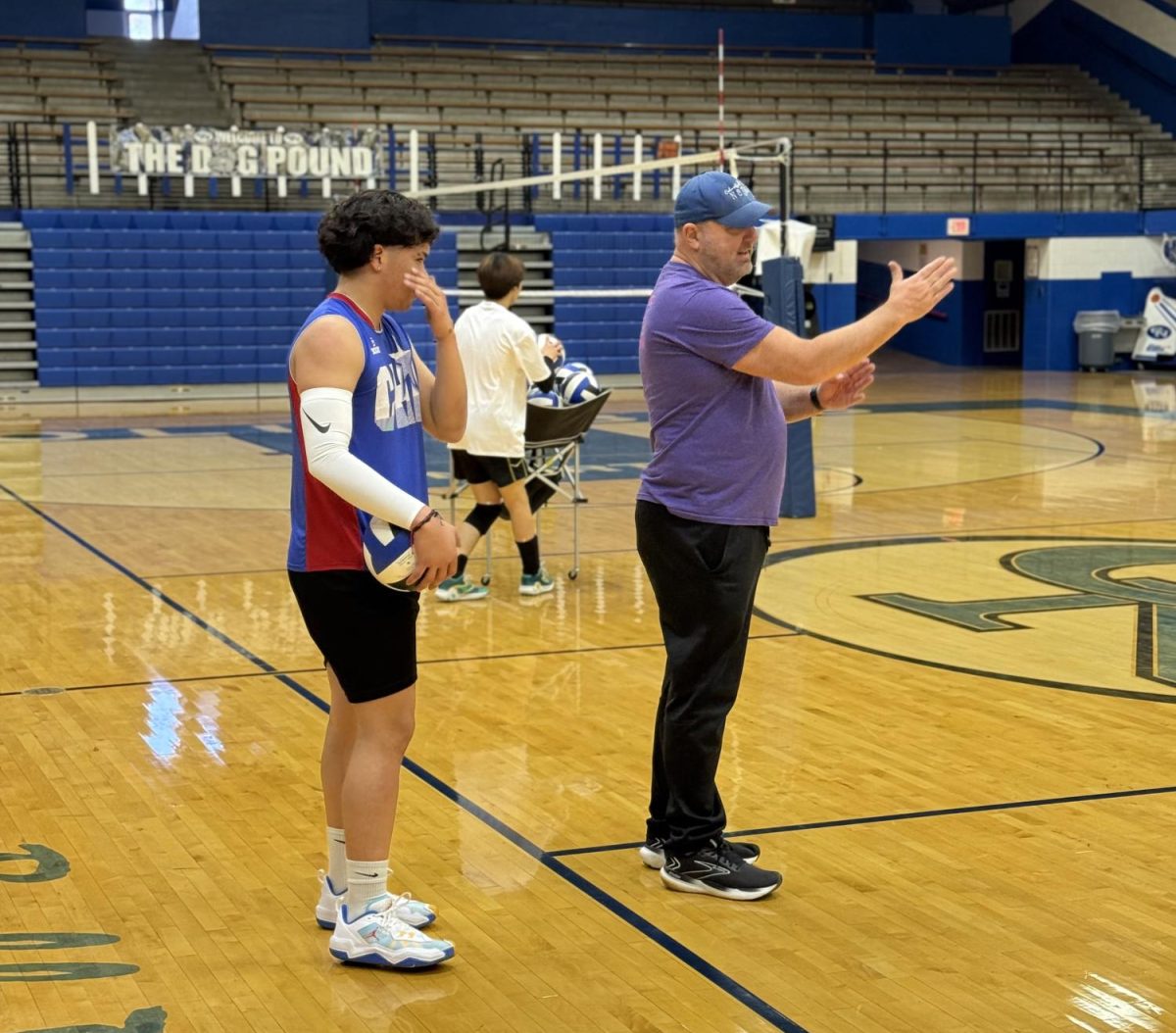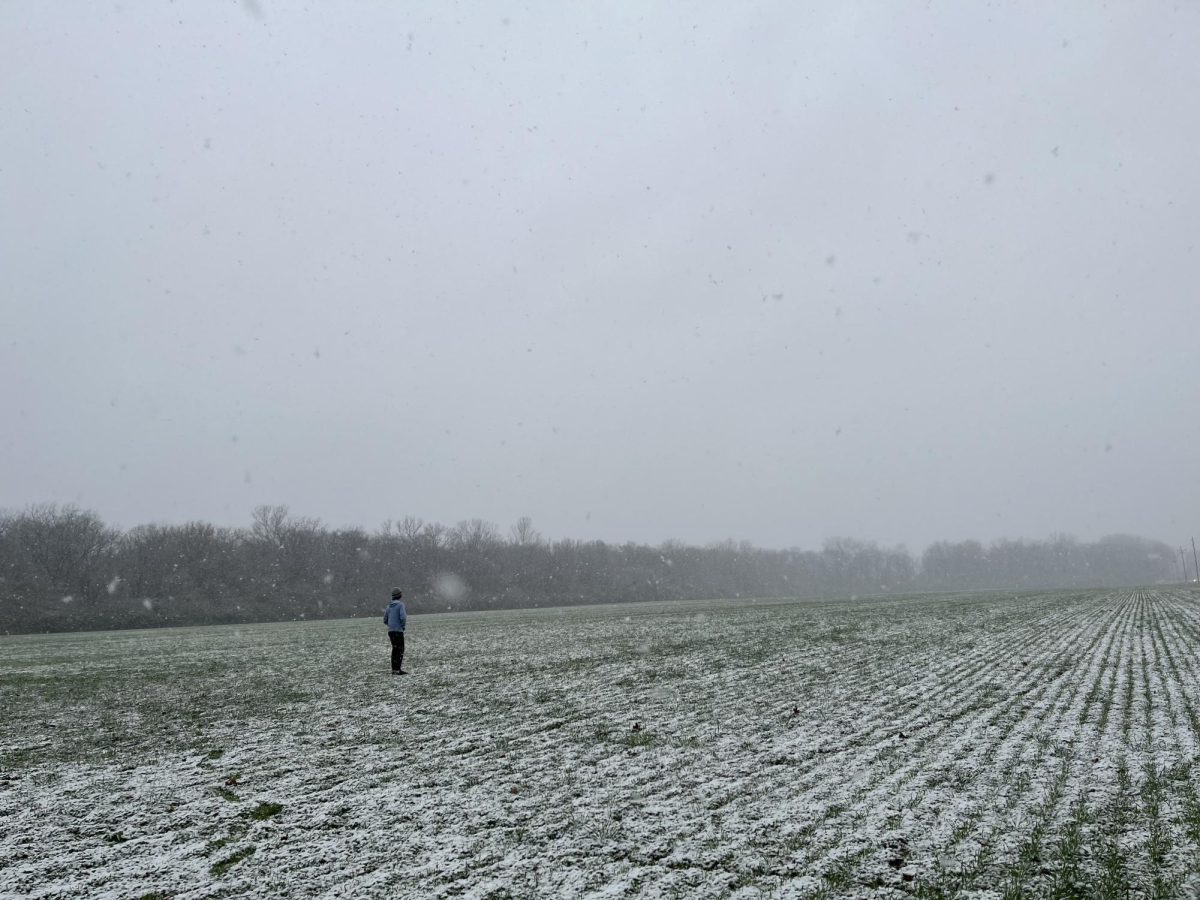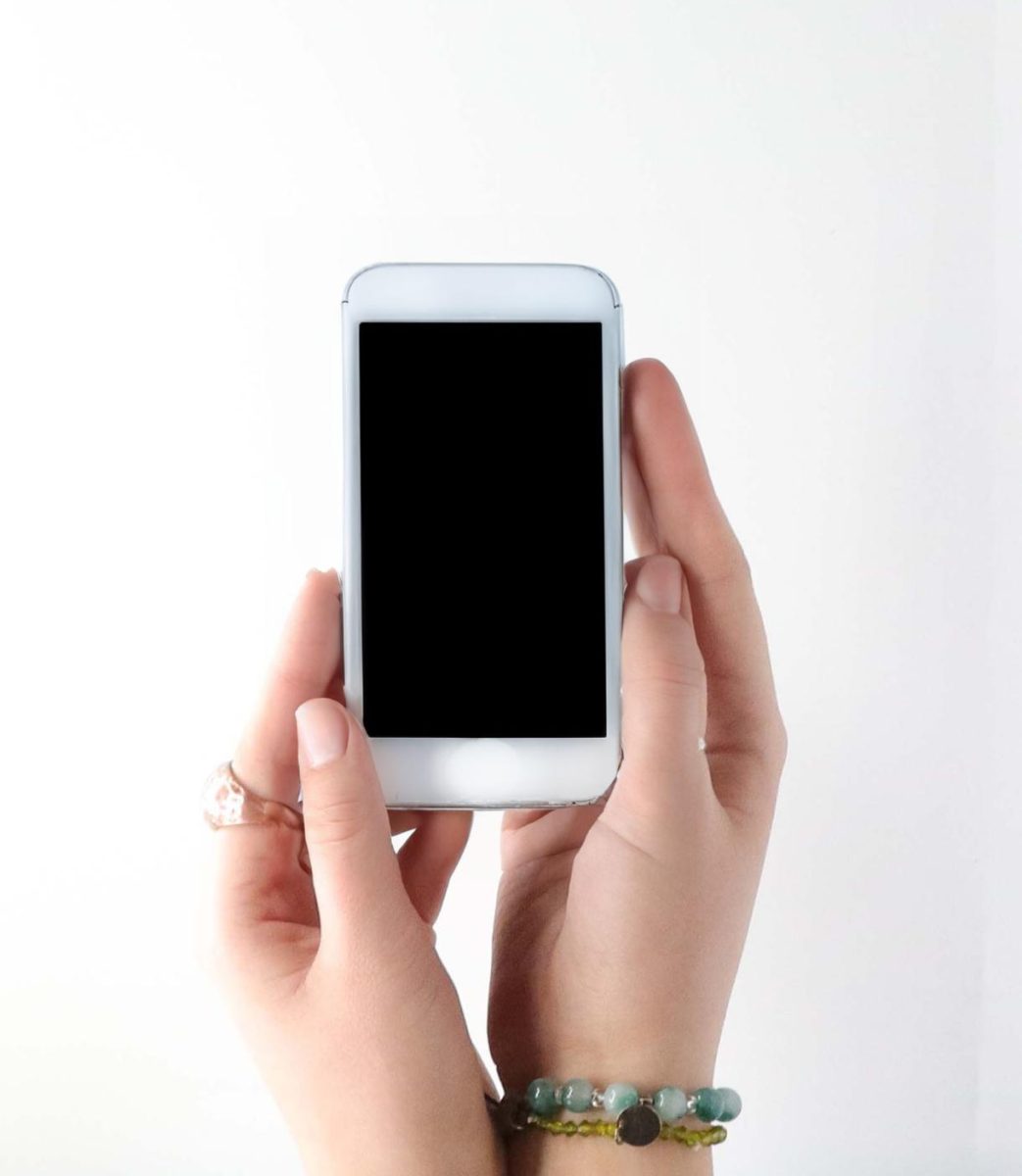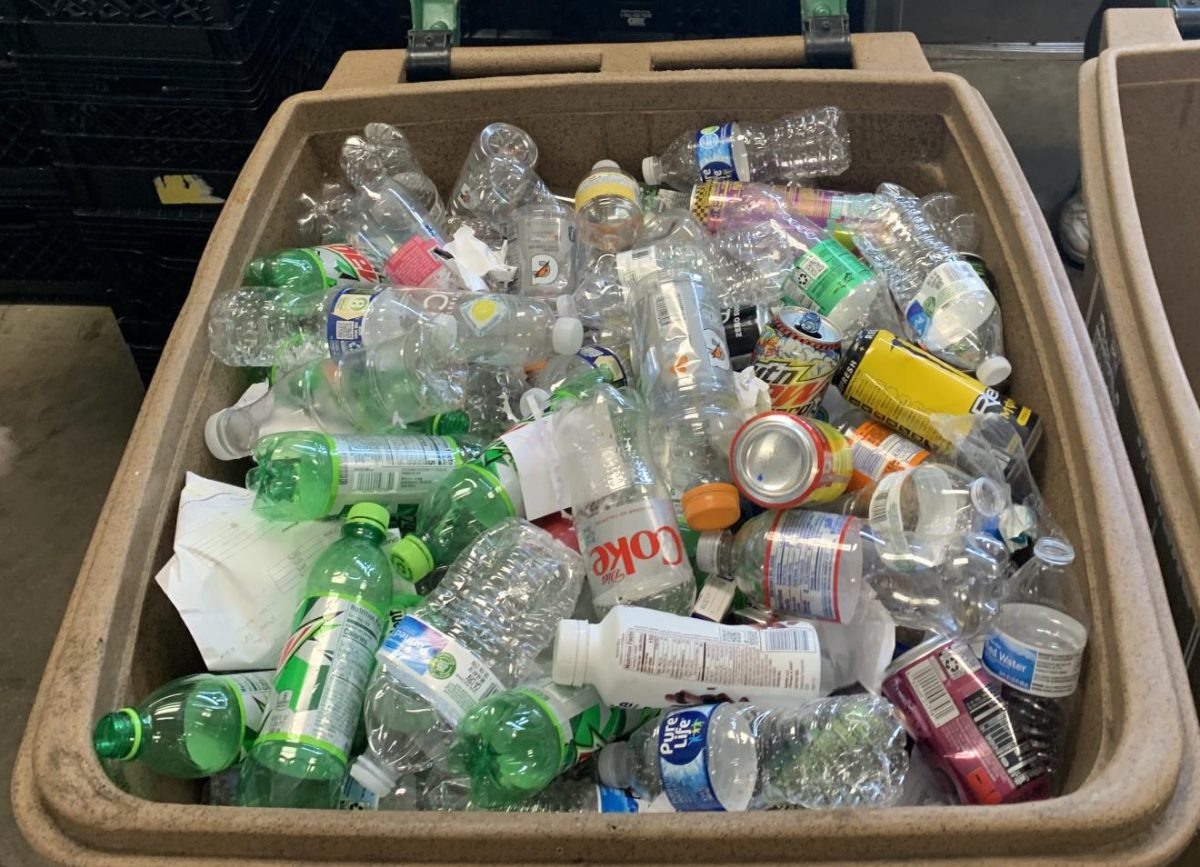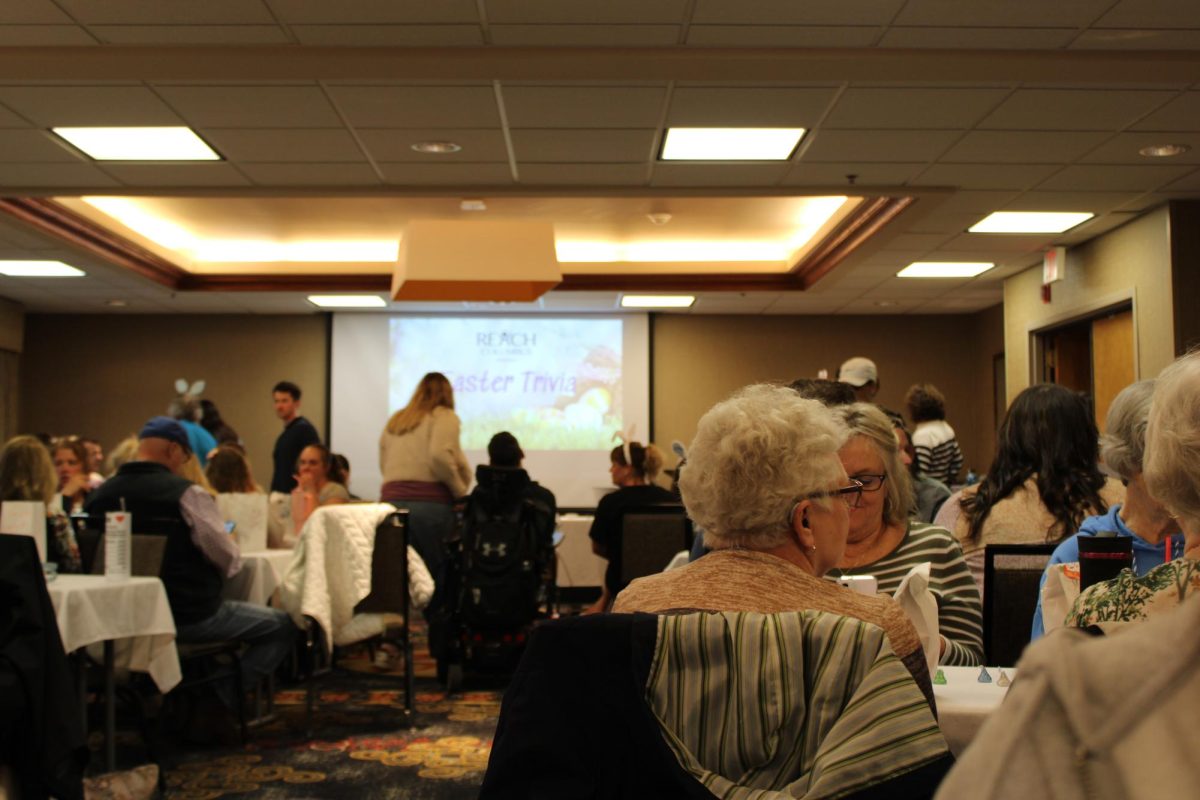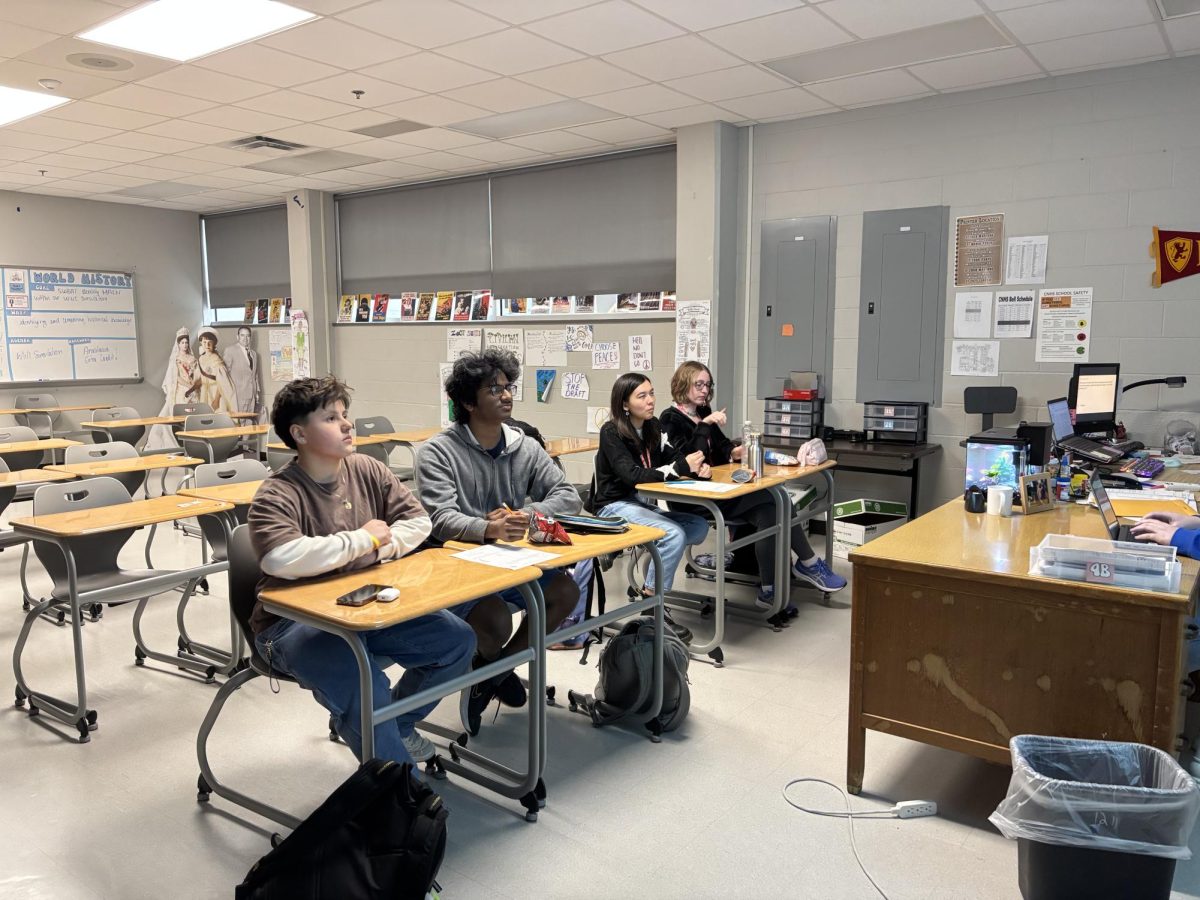Over half of students have used AI to assist with homework according to a Triangle poll done in late February.
According to Virginia Tech University, AI has had some of the biggest impacts, bringing attention, both positive and negative. Because AI is technically deemed as ‘cheating’ and academic dishonesty, all student sources will remain anonymous.
Though AI is used quite often in today’s generation, the concept of AI has been around for decades. Artificial intelligence has had a very rich history. According to Tableau.com, AI officially birthed the term, ‘Artificial Intelligence’ by John McCarthy. The term’s official meaning became “the science and engineering of making intelligent machines.”
The website also stated how six years later, the first ‘Chatbot’ was invented by Joseph Weizenbaum at the Massachusetts Institute of Technology. Another great adjustment and discovery was the addition of “Hey Siri” to the iPhone 4s in 2011. ChatGPT made its debut in 2022, changing students’ views on academics and dishonesty relating to AI.
As AI became more accessible to students, more students began to take off with the “new” resource. One junior recalls when they began using AI in school.
“My tenth grade, because that’s when my course materials started to get a little harder and I thought I was unethical before that,” says an anonymous junior, “but then I realized it’s just a tool that can help you understand things like a tutor, kind of like a tutor.”
And as AI continues to grow, it has been changing and advancing more quickly than some people, students and educators alike, can notice. A quick online search of AI platforms will yield hundreds upon hundreds of results. A sophomore details their take on AI.
“Depending on what kind of AI, there’s some interesting AIs out there,” a sophomore said. “But other than that, I think they’re pretty helpful.”
A junior stated how multiple AIs have different benefits for different items and tasks.
“I use Deepsea since it’s the best AI, but it does have the risk of getting your information lost,” a junior said. “And then I also [use] Chat GPT and QuestionAI are much more frequent.”
English teacher Katherine Stahl has expressed how she feels about the fast changes.
“It’s frustrating because the technology is changing so rapidly,” Stahl said. “But I’ve figured things out by networking with other teachers and exploring on my own.”
Teachers aren’t the only ones with strong emotions toward the new developments of AI. A sophomore describes their outlook on AI.
“I feel like AI’s been impacting society and more recently because in earlier years, it was really, you know, underdeveloped,” the sophomore said. “But now that people are actually taking it seriously and actually starting to develop it, it’s getting scarcely accurate and that’s kind of terrifying for the future.”
Almost no one knows AI more than AI itself, so we asked ChatGPT what it thinks are some benefits and drawbacks of AI, offering a unique insight into its abilities. ChatGPT gives a clear answer about the limitations and advantages of AI.
“From my perspective as an AI, I don’t “feel” anything in the way humans do,” ChatGPT said. “But I can analyze trends and impacts.”

AI detection can sometimes be challenging to some, but is becoming easier as more teachers, and students, learn more about it and its behaviors in order to utilize it in a more productive way. One thing that many syllabuses now draw attention to is the use of AI, and what happens if AI is detected. BCSC’s handbook has clear outlines for academic honesty, with essays and work that are turned in and that have been found to have been to display academic dishonesty earn an automatic “F”, and even detention if academic dishonesty is repeated. English department chair Katie Chaplin explains what specifically makes AI plagiarism, and what consequences may occur if someone is caught using AI for plagiarism.
“AI use falls under our plagiarism policy. Students may not represent work from another person or source as their own work or thoughts,” Chaplin said. “Our department policy is that students may receive a zero on any plagiarized assignment, parents will be contacted, and academic referrals will be sent to cohorts. Teachers may decide if they want to give the student a zero or allow them a chance to rewrite the assignment, but any consequences from the academic referral are decided by the cohort academic coaches or assistant principal.”
However, with AI being a relatively newer issue, the outlines and consequences of AI use are not as clearly defined. The Cohort Office, however, has drawn out these lines, which are outlined in situations where students have received authoritative control over AI use.
Academic coach Kassandra Stemnock spoke about students’ AI usage and the disciplinary actions that follow.
“I have had a couple students be repeat offenders with AI usage on assignments that was considered academic dishonesty, and it does result in disciplinary actions. The first time, teachers take care of the discipline in class and it usually results in a zero percent for the assignment,” Stemnock said. “If it happens a second time, we would review the case of academic dishonesty and it would result in school discipline.”
AI detection itself is a big part of AI detection. According to Stemnock, AI detection isn’t as hard as some may think.
“Teachers are quick to notice the AI writing,” Stemnock said. “Since AI has a pretty specific writing style that doesn’t typically match a student.”
As mentioned, AI in education is also a topic that seems to be split. Chaplin also mentions how teachers are beginning to combat negative AI use in the classroom.
“I have several teachers who are trying to combat AI usage through different detection programs,” Chaplin said. “Or by having students complete timed writings on paper.”
Even more so, there are now new outlines on some syllabuses outlining appropriate AI use. This has led to teachers explaining when and when not to use AI, as some AI has proved to be a helpful tool in the classroom. Stahl details how she utilizes AI tools in her classroom.
“I’ve shown students how to use AI to brainstorm/explore research paper topics and get ideas for quotes in a literary analysis essay. I’ve also used it for tasks like generating vocabulary lists. I needed a quick definition list of terms for academic team, and I used AI for that,” Stahl said. “Of course the key is that you can’t just go with whatever it gives you.”
Stahl emphasizes something that many people have been taught about reliable sources: you can’t trust everything that the internet says. This includes ChatGPT and other platforms. ChatGPT may try its best, but after all, it still is not a completely reliable source.
“While AI is trained to be logical, sometimes it contradicts itself within the same response,” ChatGPT said.
Along with its credibility debated, ethical AI use is also a hot topic. Is it cheating to use AI? To what extent is it? A sophomore describes what they’re noticing.
“Kids are using it way too much [as] an advantage. They’re taking advantage of it,” an anonymous sophomore said. “They’re not using it in a useful way.”
In school, students have used AI to do a multitude of things: answer questions, help write essays, and more. After all, AI is a resource, but ethical AI use is debated.
“I’m working on getting more comfortable with it myself. At first, it just gave me the icks,” but like all technology, it’s important that we learn how to use it appropriately, “ Stahl said.
Of course, students use it for a multitude of things, with one of the most important being school. AI in education yields multiple benefits, as AI can help you answer prompts you’re confused by, or math problems you can’t seem to find the answer to. Students and teachers alike have been utilizing and finding better ways to use AI. By learning the ins and outs of AI, and by trying to find the line between using resources and cheating, teachers and students are gaining a better understanding of AI overall. A sophomore gives their opinion on using AI wrongly.
“We are the ones who made AI, so we have the key to do whatever we want with it. And that’s the reason it’s getting so bad is because people are letting it get this bad,” an anonymous sophomore said. “So if it does, you know, get really horrible in the future, we will be able to take over it.”
Students have a tendency to use AI whenever they need it, for a countless number of reasons. A junior highlights how they use AI.
“I do use AI and AI can be a really useful tool for brainstorming,” a junior said. “But it is important to use that ethically.”
As students progress through their academic journey, they may notice that it usually tends to get harder. One may think that having a seemingly magical platform that can tell you the answer upon command is something that would only yield positive results. After all, some students believe it’s using your resources.
“I use AI for physics, because it has a lot of calculations and to understand concepts like physics. I use AI for computer science sometimes to understand how the code is done and to break down parts,” an anonymous junior said. “Because who else knows who else knows coding better than the computer itself?”
AI has not only raised some concerns in education, it has raised concerns in the workforce. Assistant Director of Educational Technology at BCSC Brenny Kummer spoke on her opinions about how AI can affect a place of teaching.
“We want to make sure teachers have the knowledge and tools to use AI productively while also understanding its ethical implications,” Kummer said. “AI has the potential to help with productivity in education as well, as it has already shown to be helpful in this area in many other fields: helping with efficiency in planning, grading, and communication.”
Kummer also shared how AI affects teachers when doing time-consuming tasks.
“It can act as a digital design assistant, helping teachers create engaging activities, personalize learning, and analyze student data faster. Plus, AI is already woven into things our students (as well as teachers) interact with, like AP exams, scholarships, and college applications, so it’s important that educators know how these systems work,” Kummer said.
With teachers using AI with tasks in their classroom, there are some privacy concerns according to Director of Technology Innovation Nick Williams.

“We have to make sure that AI is being used responsibly. There are still data privacy concerns with AI and when we teach our educators about using AI, we always start with making sure personal information of students and staff are kept out of the AI,” Williams said. “If we work with an AI provider, we review their terms and conditions and privacy policies to make sure they meet our data privacy requirements. With generative AI models being relatively new, there are a lot of AI companies that we have to review.”
BCSC hopes to support teachers in their AI exploration.
“If there is an AI tool that we do really value, we have to make sure our teachers are supported and trained on how to use it. We have seen tremendous use of some of those tools that we have been able to use in the district through some state grants,” Williams said.
In addition, Williams recognizes the need for AI education for students.
“For students, we have to make sure we are teaching students how to use the tools ethically and how to use them effectively. AI isn’t going away, so we need to prepare our students as they graduate from our district,” Williams said.
As students start thinking about life beyond high school, they need to be more aware of AI use in their fields. Ranging from art careers to STEM careers, and almost everything in between and beyond, there are almost no fields that have been left untouched by AI.
As students learn to act and work in the real world, how can they better understand AI and how it relates to not only their present but also their future? AI has revolutionized the work industry, as AI has the capability to do the work nobody really wants or thinks about doing, such as repetitive activities. AI can also help businesses save money, and they do not have to pay someone to do the work that AI can do.
A junior shares how AI may or may not affect their future in the workforce.
“I’ll probably do something engineering cause engineers are pretty well rounded, I would say,” a junior said, “And I think they use AI for some things, but mostly it’s derivations and uses your own brain.”
With the continuous growth of AI, students and teachers alike will have to learn how to navigate AI.
“I think that it’s definitely a gray area when it comes to using AI,” said Stemnock. “It can be a great tool for education, but like all tools, it can be misused.”






